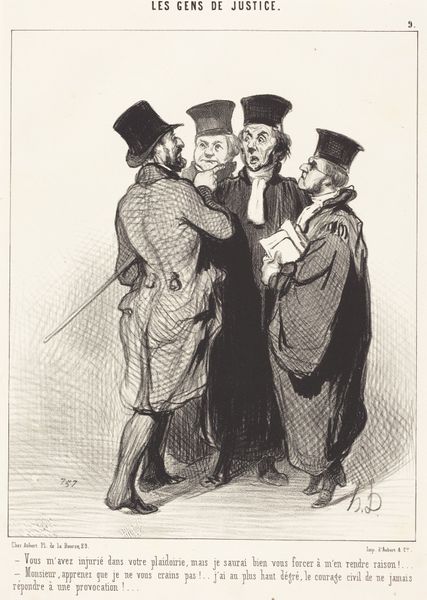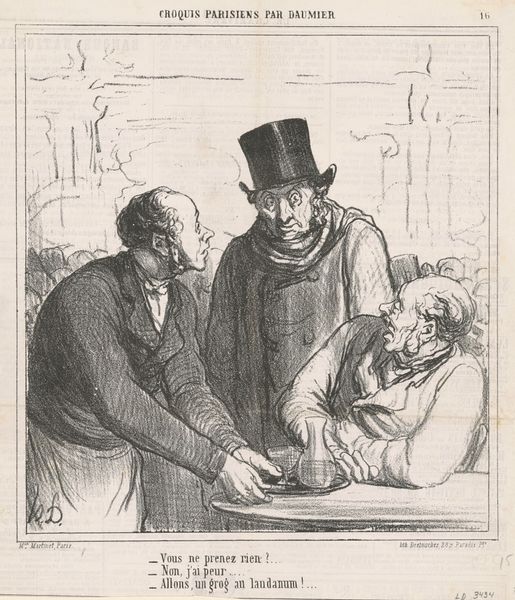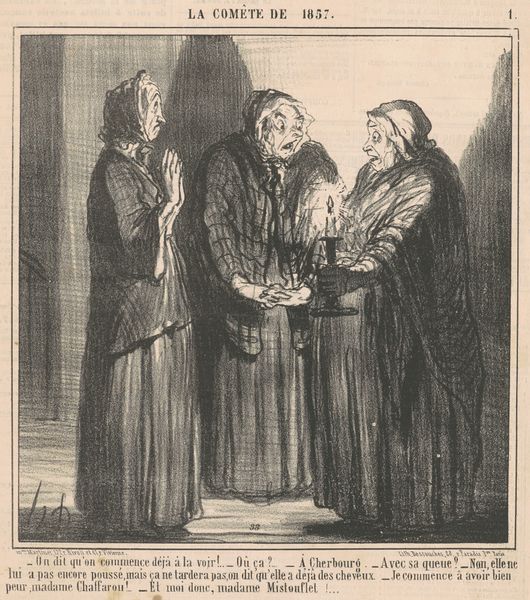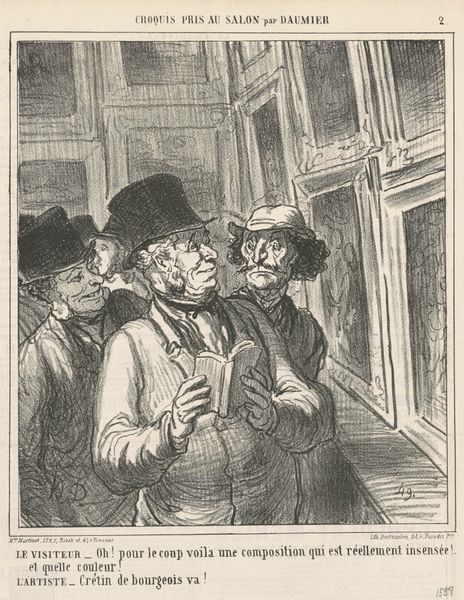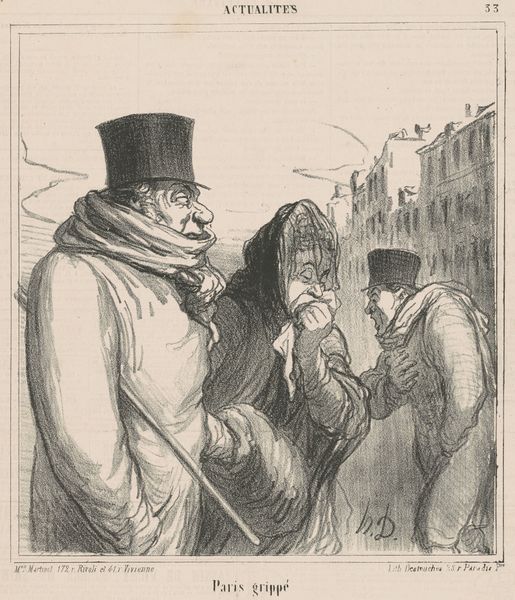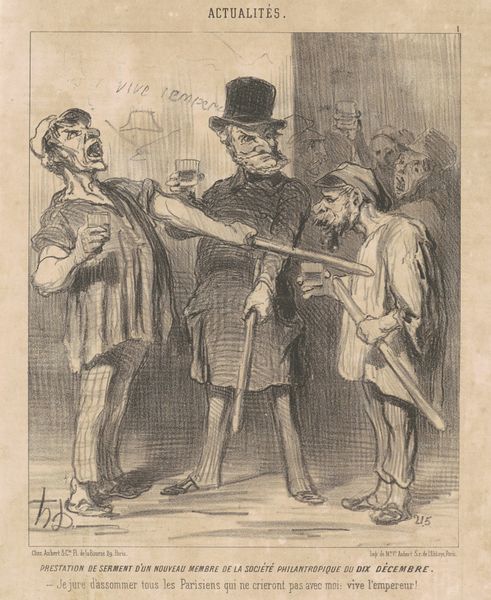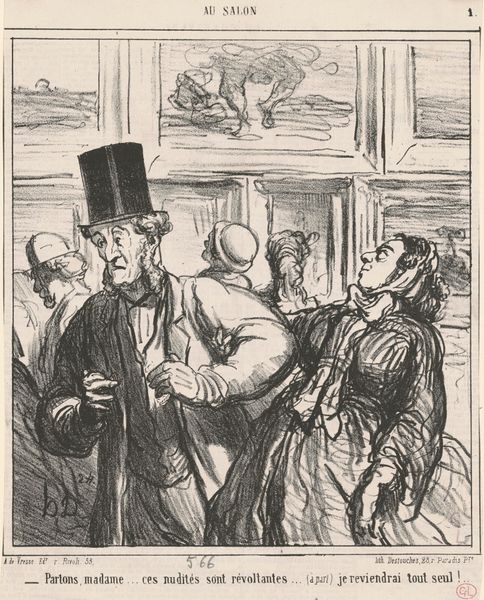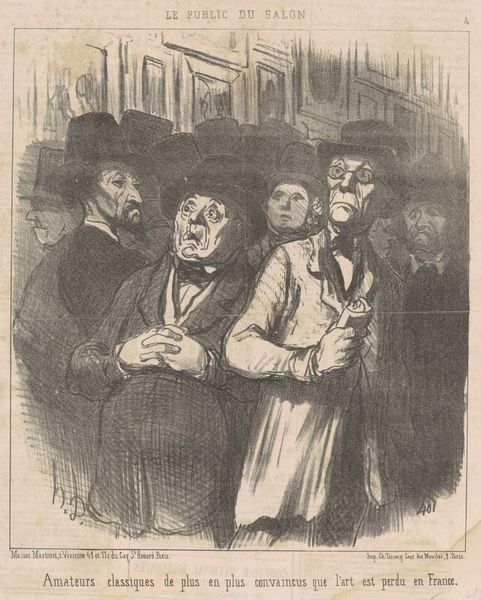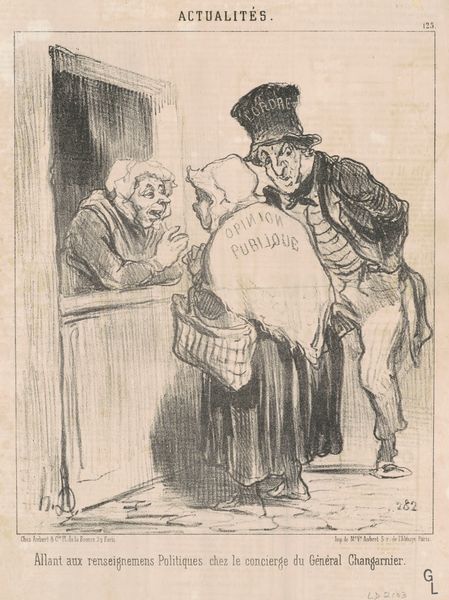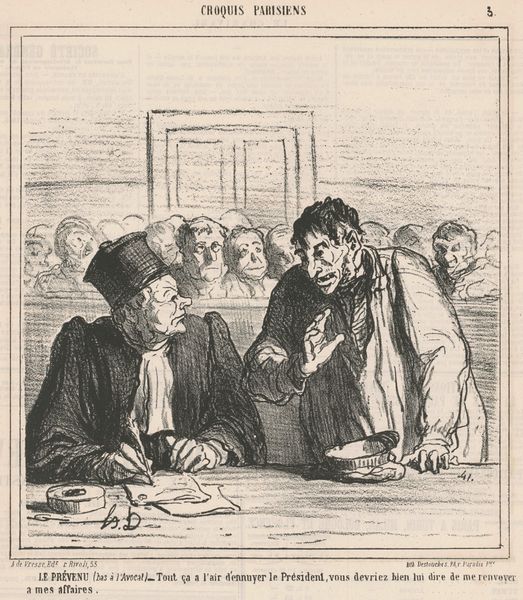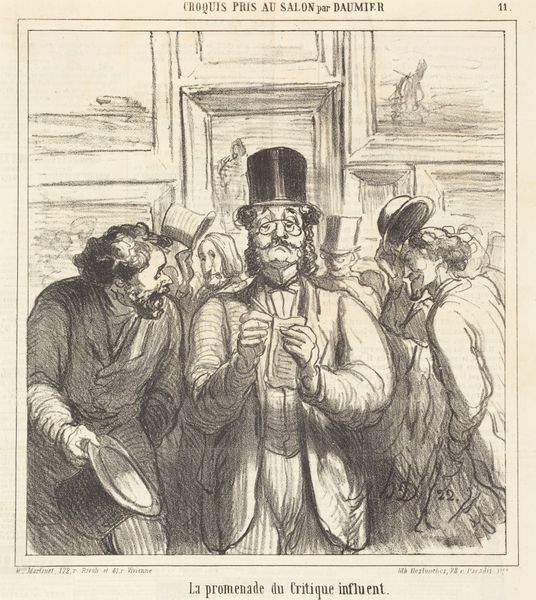
lithograph, print
lithograph
caricature
genre-painting
Copyright: National Gallery of Art: CC0 1.0
Curator: Honoré Daumier's lithograph, "Ah! Mon cher monsieur, permettez de . . .", likely created in the mid-19th century, is quite striking. The artist’s distinctive style makes it immediately recognizable. The elongated features and almost grotesque expressions of the figures evoke a palpable sense of unease, maybe even social critique. Editor: Yes, there is a sharp satire feel to it. The men seem almost sycophantic. How do you interpret the social commentary Daumier is making here? Curator: Daumier thrived in a period ripe with social and political tension. His caricatures were weapons – incisive commentaries on the bourgeoisie and the corruption of power. Consider the context: 19th-century Paris, the rise of industrial capitalism, and vast social inequalities. How might this scene, set at an art salon, reflect the dynamics of power and class at the time? Is he critiquing the commodification of art, or perhaps the empty flattery exchanged within elite circles? What do you think is the relation between these two aspects? Editor: It does seem like there is tension being unveiled on both of these levels. Are the men on the image genuinely greeting each other, or is the gesture closer to something expected from each other? The over-exaggerated features hint there may be some critique, which leads me to ask—are those features a way to highlight power? Curator: Exactly. Daumier employs caricature not just for humor, but to reveal underlying truths about the human condition and power structures. Look closely – who is benefiting from this exchange? How does their body language reinforce, or undermine, their verbal declarations of admiration? Consider also Daumier’s own position as a working-class artist navigating this complex social landscape. Editor: It seems he’s creating a world that’s commenting on itself, and this reflection adds more power to the statement. The visual cues almost scream dishonesty; their rigid body language clashes with the hand-holding gesture. This perspective enriches how I engage with 19th-century art. Curator: Indeed. Understanding the artwork requires decoding these silent dialogues between class, aspiration, and artistic integrity. Daumier, through the lens of his class, encourages a deeper reading of this particular moment in time.
Comments
No comments
Be the first to comment and join the conversation on the ultimate creative platform.
